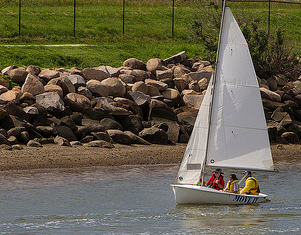Colin Powell said if people stop bringing you problems you’ve stopped leading them. People cannot bring you problems if you are not accessible to them. An old management maxim is leading by wondering around (LBWA).  There is more to wandering than aimlessly walking around. For LBWA to be effective you have to wonder around the areas and among the people least likely to otherwise have access to you or that you would ordinarily see. People only bring problems to accessible leaders. You have to be accessible to hear people’s concerns.
There is more to wandering than aimlessly walking around. For LBWA to be effective you have to wonder around the areas and among the people least likely to otherwise have access to you or that you would ordinarily see. People only bring problems to accessible leaders. You have to be accessible to hear people’s concerns.
Imagine an organization really dedicated to providing training to employees from experts within the organization. The leaders send these experts to school to learn best ways to train others. They develop training programs to take to field sights where people work. They advertise the availability of the training to lower level leaders, yet none of the organizational sub-units request the training. The leaders figure they have prepared the wrong stuff, or that the training is not wanted nor necessary.
Some time later as part of a periodic organizational assessment, select members of the organization’s headquarters visits a branch office. During the visit staff look at records, business activities, and leader actions. The office fails to meet the organizations expectations. The head of the visiting team asks the local manager why they did not request the training the organization worked so hard to develop? The answer, “We did not know about it.”
Now instead of just emails. Posters, fliers and other traditional advertising, corporate sends out key leaders to branch offices and operations months before a scheduled staff visit. The leader meets with the local manager and tours the facility. She notes the same deficiencies and asks the managers plan to correct the problems before the inspection. The manager states they have a bunch of new people and lack the resources to develop a ground up training program. The senior leader talks with the manager about the training prepared by central office for just such situations. They set up a time for the leader of the training branch to visit and assess the location’s training needs and works with the local manager to identify the training available. The training branch sends out training teams to meet the need. Several months later the branch passes inspection.
The manager is invited to the central office to talk to the c-officers about her experience with the training branch. They learn that even though the training was well advertised, the tasks, purposes, and abilities of the trainers was never fully communicated to local managers. The manager points out the only reason the became aware of the available opportunities was because the senior leader paid a visit providing the manager access to the organizations leaders.
As the meeting breaks up, the local manager looks across the table to the training branch chief. “Because of the training you gave our foremen on how to assess processes, we have identified several employees who need some training. Can you have the process guy call us so we can schedule a training for them?’ The training manager is thrilled at the request. The CEO is impressed the local manager asked for help and that the front-line leaders have been empowered to conduct assessments and request assistance for corrective actions. The change was the local branch having access to the leaders in the organization.
If organizational leaders never go where the work is being done, their junior leaders rarely have the opportunity to bring problems to them. Opening the lines of communication between organizational leadership levels allows junior leaders to bring their problems to those best able to achieve success. Junior leaders who lack access to their bosses never bring problems up. When people do not bring your problems, you are not leading, but allowing others to lead for you. Get out of the office and go to where the real work of your organization is done. Lead by wondering around. Only then will people bring you their problems.
———————-
Photo credit: David Gutierrez from flickr.com under a CC license.


 ided so the student understands help really is there.
ided so the student understands help really is there.